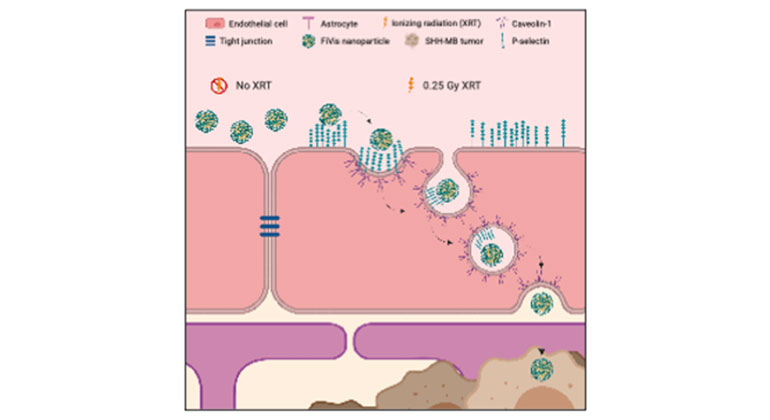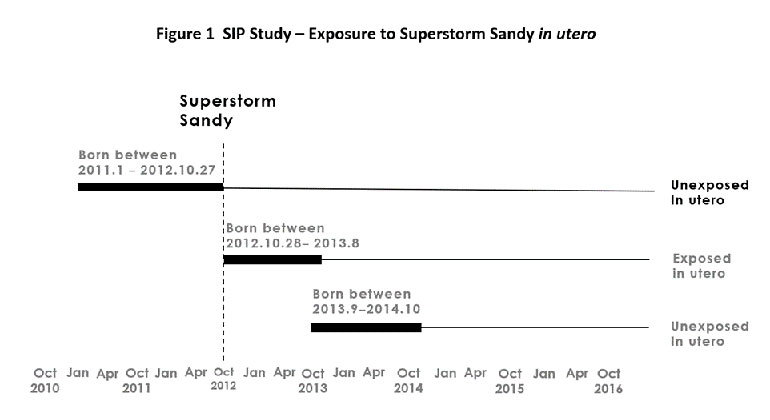Toxic Waste Sites Cause 'Healthy Years of Life Lost' for People Living in India, Philippines and Indonesia
Mount Sinai researcher presents novel findings in environmental health at the Pediatric Academic Societies.
Toxic waste sites with elevated levels of lead and chromium cause a high number of "healthy years of life lost" in individuals living near 373 sites located in India, Philippines and Indonesia, according to a study by a Mount Sinai researcher published online today in Environmental Health Perspectives.
The study leader, Kevin Chatham-Stephens, MD, Pediatric Environmental Health Fellow at the Icahn School of Medicine at Mount Sinai, presented the findings today at the Pediatric Academic Societies (PAS) annual meeting in Washington, DC. "Lead and hexavalent chromium proved to be the most toxic chemicals and caused the majority of disease, disability and mortality among the individuals living near the sites," said Dr. Chatham-Stephens, first author.
The study titled, "The Burden of Disease from Toxic Waste Sites in India, Indonesia, and the Philippines in 2010," was a joint research partnership between Mount Sinai and the Blacksmith Institute. Eight chemicals were sampled and collected at the toxic waste sites in 2010. The samples were then measured for pollutant levels in the soil and water and then compared with the 8,629,750 individuals who were at risk of exposure around these sites in order to calculate the loss of years of equivalent full health.
Researchers calculated healthy years of life lost due to ill-health, disability or early death, in disability-adjusted life years (DALY), a measure of overall disease burden used by the World Health Organization. One DALY represents the loss of one year of equivalent full health. In this study, the total number of lost years of full health or DALYs was 828,722. In comparison, malaria in the same countries caused 725,000 lost years of full health, and outdoor air pollution caused 1.4 million lost years of full health in 2008, according to Dr. Chatham-Stephens.
"The number of DALYs estimated in our study potentially places toxic waste sites on par with other major public health issues such as malaria and outdoor air pollution which are also causing a high number of healthy years of life lost," said Dr. Chatham-Stephens.
"This study highlights a major and previously under-recognized global health problem in lower and middle income countries," said Philip Landrigan, MD, MSc, Dean for Global Health at the Icahn School of Medicine at Mount Sinai and one of the authors of the study. "The next step is targeting interventions such as cleaning up the sites and minimizing the exposure of humans in each of these countries where toxic chemicals are greatly present."
Additionally, children and women of child-bearing age made up two-thirds of the population in the study. "If a woman is pregnant, the fetus may be exposed to these toxic chemicals," said Dr. Chatham-Stephens. "This data is relevant because the prenatal to early childhood period is the time when individuals are very vulnerable to some toxic exposures, such as lead’s impact on the developing nervous system."
Previous studies have shown that lead can cause neurological, gastrointestinal and cardiovascular damage, while those also exposed to high levels of chromium have a greater chance of developing lung cancer. "Our research shows that chemical pollutants from toxic waste sites are insufficiently studied in lower and middle income countries and that disease and death caused by these chemicals can contribute to loss of life," said Dr. Chatham-Stephens.
About the Department of Preventive Medicine
Mount Sinai’s Department of Preventive Medicine is internationally renowned for excellence in preventive medicine, occupational and environmental medicine, community health, and environmental pediatrics. The department is among the largest medical school departments of preventive medicine in the United States. Its mission is to prevent disease, protect the environment, and promote health in all the communities Mount Sinai serves. It consists of 57 full-time faculty, 137 adjunct and voluntary faculty, and 265 staff.
The department’s academic programs train medical students for residency programs in general preventive medicine and in occupational and environmental medicine. It also offers a fellowship program in environmental pediatrics and the medical school's master’s in public health (MPH) program.
For more information, visit http://icahn.mssm.edu/research/programs/mount-sinai-global-health.
The Mount Sinai Medical Center
The Mount Sinai Medical Center encompasses both The Mount Sinai Hospital and Icahn School of Medicine at Mount Sinai. Established in 1968, the Icahn School of Medicine is one of the leading medical schools in the United States. The Medical School is noted for innovation in education, biomedical research, clinical care delivery, and local and global community service. It has more than 3,400 faculty in 32 departments and 14 research institutes, and ranks among the top 20 medical schools both in National Institutes of Health (NIH) funding and by U.S. News & World Report.
The Mount Sinai Hospital, founded in 1852, is a 1,171-bed tertiary- and quaternary-care teaching facility and one of the nation's oldest, largest and most-respected voluntary hospitals. In 2011, U.S. News & World Report ranked The Mount Sinai Hospital 16th on its elite Honor Roll of the nation's top hospitals based on reputation, safety, and other patient-care factors. Of the top 20 hospitals in the United States, Mount Sinai is one of 12 integrated academic medical centers whose medical school ranks among the top 20 in NIH funding and U.S. News & World Report and whose hospital is on the U.S. News & World Report Honor Roll. Nearly 60,000 people were treated at Mount Sinai as inpatients last year, and approximately 560,000 outpatient visits took place.
For more information, visit http://www.mountsinai.org
Find Mount Sinai on Facebook, Twitter and YouTube
# # #
About the Mount Sinai Health System
Mount Sinai Health System is one of the largest academic medical systems in the New York metro area, with 48,000 employees working across seven hospitals, more than 400 outpatient practices, more than 600 research and clinical labs, a school of nursing, and a leading school of medicine and graduate education. Mount Sinai advances health for all people, everywhere, by taking on the most complex health care challenges of our time—discovering and applying new scientific learning and knowledge; developing safer, more effective treatments; educating the next generation of medical leaders and innovators; and supporting local communities by delivering high-quality care to all who need it.
Through the integration of its hospitals, labs, and schools, Mount Sinai offers comprehensive health care solutions from birth through geriatrics, leveraging innovative approaches such as artificial intelligence and informatics while keeping patients’ medical and emotional needs at the center of all treatment. The Health System includes approximately 9,000 primary and specialty care physicians and 11 free-standing joint-venture centers throughout the five boroughs of New York City, Westchester, Long Island, and Florida. Hospitals within the System are consistently ranked by Newsweek’s® “The World’s Best Smart Hospitals, Best in State Hospitals, World Best Hospitals and Best Specialty Hospitals” and by U.S. News & World Report's® “Best Hospitals” and “Best Children’s Hospitals.” The Mount Sinai Hospital is on the U.S. News & World Report® “Best Hospitals” Honor Roll for 2024-2025.
For more information, visit https://www.mountsinai.org or find Mount Sinai on Facebook, Instagram, LinkedIn, X, and YouTube.

Scientists Develop Novel Approach to Enhance Drug Delivery for Brain Tumors in Children
Mar 02, 2023 View All Press ReleasesNewly Designed Children’s Emergency Department Opens at The Mount Sinai Hospital
Apr 11, 2022 View All Press ReleasesMount Sinai Researchers Discover Treatment Option for Rare Genetic Disorder
Aug 04, 2020 View All Press ReleasesMount Sinai Researchers: Why COVID-19 May Be Less Common in Children Than Adults
May 22, 2020 View All Press Releases

